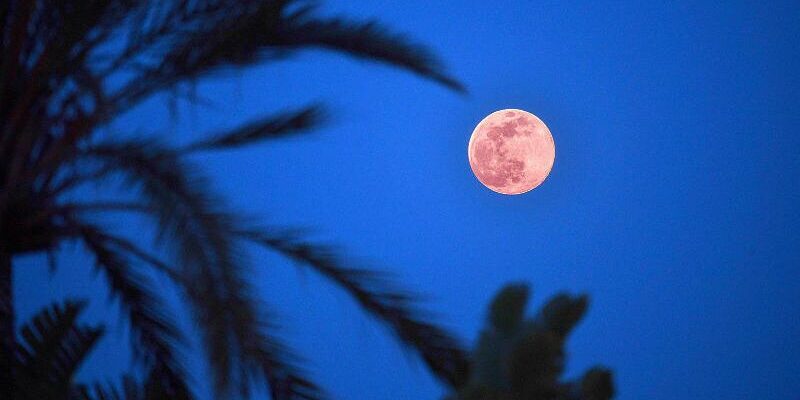As the summer solstice (June 21) draws closer in the northern hemisphere, the Full Strawberry Moon will light up the sky on Sunday, June 4, 2023, around 3:42 a.m. The fully illuminated lunar disc will shine in the constellation Scorpio.
Sunday, June 4, 2023, around 3:42 a.m., residents of the northern hemisphere will be able to admire the full Strawberry Moon, when the fully illuminated lunar disk shines in the constellation Scorpius, near its brightest star, Antares. In fact, the June full moon usually occurs a few weeks before the summer solstice in the northern hemisphere, which falls on June 21 this year. Moving over the horizon, the moon thus appears pink or red in the sky, because its light is diffused by the atmosphere. Incidentally, the Strawberry Moon is also the time when the moon comes closest to Earth.
If its name evokes the pink or red color of strawberries, it has absolutely nothing to do with the color of the june full moon. The latter will no doubt be golden orange or white, just like the other full moons visible this year. Nevertheless, the Strawberry Moon may still appear reddish in the sky, as is the case with the Sun, which sometimes appears red as it rises and sets. For information, the next full moon of the year, baptized Super Moon of the fallow deerwill be visible in the sky on July 3, 2023.
Strawberry moon: a name inherited from Native Americans
On his side, the next Strawberry Moon will not be visible until the following year. It is expected to take place in June 2024. It will again occur in the same month as the summer solstice, which will take place on June 20, 2024. In fact, the term Strawberry Full Moon is one of the traditional names used by Native Americans to describe the June Full Moon. This name was not inspired by the characteristics of the Moon, since it actually comes from the fruit that Native American tribes harvested in June: strawberries. In the past, the full moon in June was referred to as the “rose moon” in Europe. Either because the roses bloom in June, or because the June Full Moon can sometimes take on a pink appearance.
